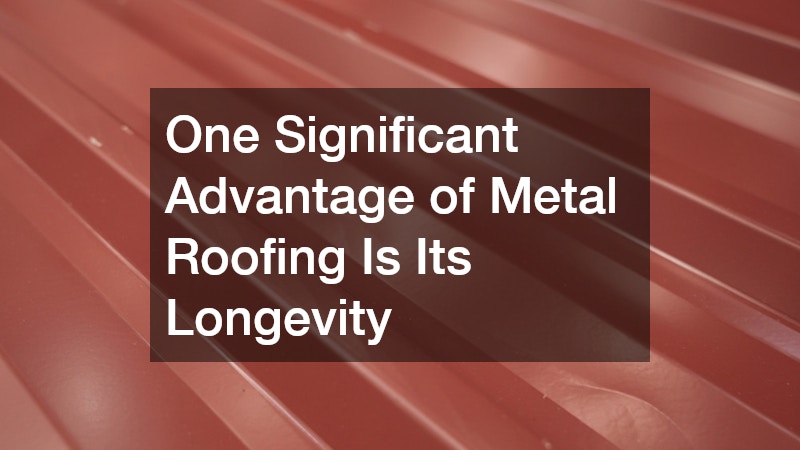When it comes to choosing the best type of roofing materials for your home, there are several factors to consider. Your roof is more than just a structure that covers the house; it contributes to aesthetics, impacts energy efficiency, and affects the overall durability of the home. This guide will help you explore different roofing materials and their benefits to make an informed decision.
Asphalt Shingles
Asphalt shingles are one of the most popular roofing materials in the United States, primarily due to their affordability and ease of installation. Additionally, asphalt shingles come in a variety of styles and colors, allowing homeowners to select an option that complements their home’s exterior. Many types of asphalt shingles are reinforced with fiberglass or organic materials, enhancing their durability against weather elements. They are also relatively lightweight, which reduces the need for additional support structures. Despite their affordability, asphalt shingles can last 20 to 30 years with proper maintenance.
One of the primary advantages of asphalt shingles is their ability to resist fire, which can be a crucial safety feature for many homeowners. Furthermore, asphalt shingles are designed to shed water efficiently and resist wind uplift, making them suitable for various climates. The maintenance required for asphalt roofs is generally uncomplicated, involving regular inspections and the timely replacement of damaged shingles. However, homeowners should be aware that the dark color of many asphalt shingles may lead to increased heat absorption, potentially affecting energy costs. Considering these benefits and limitations, asphalt shingles offer a balanced option for many homeowners.
Additionally, manufacturers often provide extensive warranties for asphalt shingles, providing peace of mind for homeowners concerned about potential roofing issues. Due to their widespread availability, asphalt shingles can also be easily sourced, often at a lower cost compared to other materials. This accessibility makes them an attractive option for budget-conscious homeowners who still desire a reliable and visually appealing roofing system. However, asphalt roofs may not be as environmentally friendly as some other alternatives, given their petroleum base. For those prioritizing sustainability, other roofing materials may present more suitable options.
Metal Roofing
Metal roofing is an excellent option for homeowners seeking a durable and long-lasting solution for their homes. Known for its resistance to extreme weather conditions, metal roofing can withstand high winds, heavy snow, and even hail, offering superior protection against environmental elements. Additionally, metal roofs are often coated with reflective materials, enhancing their energy efficiency by deflecting the sun’s rays and reducing cooling costs during warmer months. This roofing option is available in various metals, including aluminum, steel, copper, and zinc, each offering different aesthetic and performance benefits. Metal roofs are also lightweight, which means they require minimal structural support.
One significant advantage of metal roofing is its longevity, often lasting 50 years or more, depending on the material and quality of installation. The durable nature of metal roofs means they require less maintenance than other materials, such as asphalt shingles. Additionally, metal roofs are considered environmentally friendly, as they are often made from recycled materials and can be recycled again at the end of their lifespan. Homeowners can choose from a variety of styles and finishes, allowing them to achieve the desired look for their home without compromising on performance. However, the initial cost of metal roofing is typically higher than other options, which may be a consideration for budget-conscious homeowners.
Despite the higher upfront cost, many homeowners find the long-term savings in maintenance and energy costs to be a worthwhile investment. Furthermore, the availability of metal roofs has increased in recent years, offering greater options for customization and design. Metal roofs’ versatile designs can emulate the appearance of other materials like wood shake, slate, or tile, broadening their appeal to various architectural styles. It’s important to consider the noise factor, as metal roofs can be louder during heavy rain or hailstorms, though this can often be mitigated with proper insulation. Overall, metal roofing offers a balance of longevity, performance, and environmental benefits, making it a viable option for many homeowners.
Clay and Concrete Tiles
Clay and concrete tiles offer a unique aesthetic appeal for homeowners seeking a distinctive and durable roofing material. Known for their longevity, these tiles can easily last over 50 years, with some clay tiles enduring for a century when properly maintained. Their heavyweight provides excellent durability against harsh weather, and their natural thermal resistance offers energy efficiency benefits by regulating indoor temperature. Concrete tiles are often less expensive than clay, providing a more budget-friendly option without compromising on durability. Both materials are available in various colors and styles, enabling homeowners to achieve their desired architectural look.
One of the standout features of clay and concrete roofing tiles is their incredible resistance to fire, making them a safe choice for areas prone to wildfires. Although they are excellent for hot climates due to their cooling properties, these tiles are also impervious to damage from salt air, making them suitable for coastal regions. However, installing clay and concrete tiles requires professional handling due to their weight, necessitating additional structural reinforcement in some cases. Despite their initial installation complexity, the long-term benefits often justify the investment for many homeowners. Additionally, their natural composition means clay and concrete tiles are environmentally friendly and can be recycled.
Homeowners considering clay or concrete tiles should weigh their unique aesthetic against the potentially higher installation and repair costs compared to other materials. While these tiles are highly durable and resistant to wear, they can be prone to cracking if subject to significant impact, such as falling branches. Therefore, regular inspection and maintenance are recommended to ensure the roof remains in optimal condition. Despite these considerations, the timeless appeal and energy efficiency of clay and concrete tiles make them a favored choice for those seeking a roof that combines beauty with practicality. Ultimately, the choice between clay and concrete tiles will depend on individual preferences, budget, and regional climate needs.




